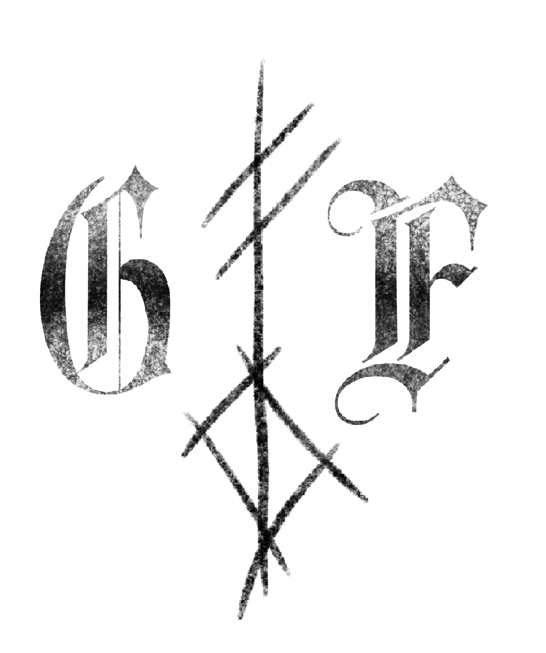︎
How do I use my Lenormand Oracle Deck?
Unlike most Tarot and oracle decks, The Lenormand is very practical and down to earth. That’s likely because of its easily recognizable symbolism and how simply we as humans can connect with it.
My Ghostfox Lenormand Oracle Deck was made to mirror the classic Lenormand deck - the only thing that I have changed is the artwork and illustrations. Therefore, if you are already equipped with the knowledge of Lenormand cartomancy you're all good to go!
BUT if this is your first time exploring Lenormand, I've set up this page for helpful reference material and outsourced links to help get you started. :)
Disclaimer: I must also say that I am in no way a "master" of this particular craft, and as with any divinatory or magick practice your own personal research and interpretation are entirely unique to yourself and your own journey.
- - - - - - - - - - - - - - - - - - - - - - - - - - - - - - - - - - - - - - - - - - - - - - - - - - - - - - - - - - - - - - - - - - - - - - - - - - - - - - - - - - - - - - - - - - - - - - - - - - -
What is Lenormand?
The Lenormand deck dates back to the 1800s. There are 36 cards in the deck and each card displays a single image. Each cards' image holds a variety of keyword meanings, some are more negative, and some more positive. The cards along with their individual meanings can be combined in pairs, strings, or Lenormand specific spreads to form "sentences" of layered answers when used.
Meanings can vary depending on the question asked, the neighboring cards, and the reader's own insights.
As stated earlier Lenormand is unlike other forms of divination and is heavily situated in daily life and events - giving straight forward, practical answers to questions.
Keyword Meanings
Each card has a specific image that goes along with it's own keyword meaning;
The flipbook above is the same mini-book of keyword card meanings that is included with my Ghostfox Lenormand Oracle Deck - digitized here for reference and convenience.
Combined Meanings
^pdf guide for possible combined meanings to help get you started on your own Lenormand interpreting journey
Reading the cards
Lenormand is not typically read through singular cards but instead through specific Lenormand 'spreads', 'pairs', or 'strings' of up to nine cards.
(For beginners purposes I will leave out the 'grand tableau' which consists of a reading of all 36 cards at once)
Two Cards: For straight to the point answers
Three Cards: For quick answers
Five Cards: For more detailed answers
Seven Cards or more: Used for very detailed answers, and usually the more cards you have in the string, the more complicated it is to read.
'Three card' spread examples
The Chaining and Mirroring method;

1. Focus on your intention. Shuffle the cards while concentrating on the issue and the question. (Direct your flow of energy towards the deck)
2. Cut the deck and place the bottom half on top of the top half.
3. Draw a card from the top of the deck. Place it on the table. This is card 1. Draw another card and place it on the right of the first card. This is card 2 (the central/focus card). Draw a final card and place it to the right of the first two cards. This is card 3. (see diagram above)
4. The central card in the spread (card 2) is also known as the focus card. It gives an overall meaning or theme for the spread. This card is read first.
5. Cards 1 and 3 are read individually.
6. All 3 cards are read together as a whole to form a general story.
7. Cards 1 and 3 are read together to give additional insights. (This is known as mirroring.)
The Sentence Method;

1. Focus on your intention. Shuffle the cards while concentrating on the issue and the question. (Direct your flow of energy towards the deck)
2. Cut the deck and place the bottom half on top of the top half.
3. Draw a card from the top of the deck. Place it on the table. This is card 1 - the subject.
4. Draw another card and place it on the right of the first card. This is card 2 - the verb.
5. Draw a final card and place it to the right of the first two cards. This is card 3 - the adverb or adjective. (see diagram above)
6. Cards are read in order from left to right in forward narration - individual words from the cards keyword meanings will form a sentence of sorts. The third card in the row tends to be an object or a characteristic that gives further insight into the situation.
*Sentence readings tend to be quite literal and are best for simpler questions in my opinion.
- - - - - - - - - - - - - - - - - - - - - - - - - - - - - - - - - - - - - - - - - - - - - - - - - - - - - - - - - - - - - - - - - - - - - - - - - - - - - - - - - - - - - - - - - - - - - - - - - - -
Helpful Links
I highly recommend checking out the following links to help further your own Lenormand journey - and just remember that practice makes perfect!
- Labyrinthos: How to Read Lenormand Card Combinations
- Labyrinthos: Lenormand Card Meanings
- Emily Rose: How to do a 3 card Lenormand spread
- Lozzy's master list of Lenormand tips
- Spiral Nature : Lenormand History and Practice
- Alittlesparkofjoy: Lenormand Beginners Guide
Happy card reading! :)
Tristen // GHOSTFOX
*2020
*Page links updated as of 2024

